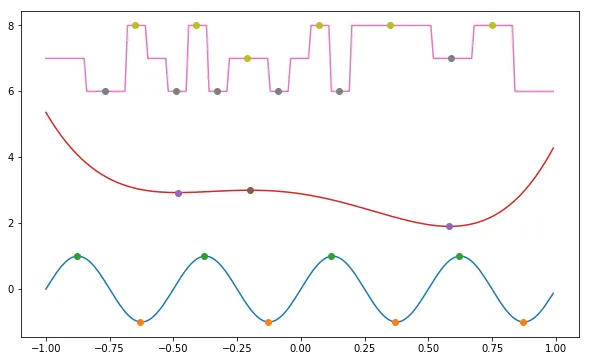如果我有一个数组:
[3, 5, 7, 9]
A = (0,2,3,4,5,2,1,2,3,4,5,6,7,8,7,6,5,4,5,6)
可以看到有4个转折点。(在A[4]、A[6]、A[13]、A[17])
我该如何使用Python返回转折点的数量?
import numpy as np
import scipy.integrate as SP
import math
def turningpoints(A):
print A
N = 0
delta = 0
delta_prev = 0
for i in range(1,19):
delta = A[i-1]-A[i] #Change between elements
if delta < delta_prev: #if change has gotten smaller
N = N+1 #number of turning points increases
delta_prev = delta #set the change as the previous change
return N
if __name__ == "__main__":
A = np.array([0,2,3,4,5,2,1,2,3,4,5,6,7,8,7,6,5,4,5,6])
print turningpoints(A)
目前,该系统存在缺陷,显然不够优雅。有什么想法吗?

TypeError: 'generator' object is not subscriptable。 可能dx应该是一个列表。 - rlms